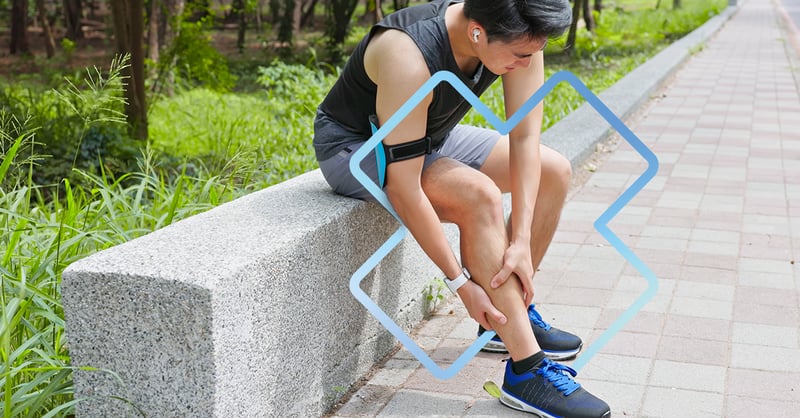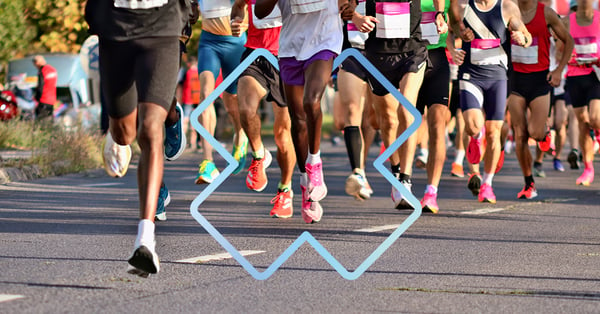
Shin Splints (type of periostitis), also known as medial tibial stress syndrome, affects approximately one in five runners. This painful condition typically arises when the leg muscles are overloaded beyond their capacity to adapt. It is commonly seen in new runners, during a return to training, or following a rapid increase in running volume or intensity.
Shin pain during or after running: could it be shin splints?
 Shin splints cause localized pain in the middle third of the tibia, on its inner or outer edge, often near the junction between the bone and the calf muscles. The pain is caused by inflammation of the periosteum, the membrane surrounding the bone, due to excessive tension during muscle contractions.
Shin splints cause localized pain in the middle third of the tibia, on its inner or outer edge, often near the junction between the bone and the calf muscles. The pain is caused by inflammation of the periosteum, the membrane surrounding the bone, due to excessive tension during muscle contractions.
The pain may be accompanied by a burning sensation, tenderness to the touch, or even hardening of the tissues. It results from repetitive mechanical stress that exceeds the body’s natural ability to recover.
What causes shin splints?
Understanding the root causes of shin splints is key to adapting your training, avoiding recurrence, and achieving lasting recovery.
1. Running technique errors
Among the most common causes of shin splints is poor running technique, particularly related to foot strike. Common errors include:
-
Low cadence (less than 160 steps/min)
-
Excessive vertical displacement (too much bouncing)
-
Full knee extension at foot strike
-
Poor hip-knee-foot alignment
Have your running gait assessed by a professional (a physiotherapist or kinesiologist with running expertise). You’ll improve efficiency, reduce injury risk, and enhance performance. Learn more about running assessment.
2. Lack of core and pelvic stability
Dynamic instability of the trunk and pelvis, often due to weak gluteal or core muscles, significantly increases stress on the tibia.
For example, inward knee collapse can result from:
-
Weak gluteus medius muscles
-
Poor control of the foot arch (overpronation)
-
Inadequate activation of deep abdominal muscles
Incorporate a short stabilizer strengthening routine (glutes, deep core muscles) 2 to 3 times per week.
Effective exercises: front plank, side plank, resistance band hip abductions, and single-leg squats.

3. Weak tibial and calf muscles
The anterior and posterior tibial muscles, along with the calves, need sufficient strength to absorb impact with every stride. Weakness here can quickly lead to periosteal overload. Strengthen your ankles with simple exercises like plantar flexion and dorsiflexion.

4. Limited lower limb mobility
Reduced mobility, whether due to previous injuries, muscular tightness, or joint stiffness, can impair tissue adaptation to running stress.
Focus on stretching the quadriceps, psoas, hamstrings, calves, and piriformis. Regular yoga practice can also be beneficial, especially in cases of general mobility restrictions.

5. Training progression errors
One of the most overlooked factors in training is progressing volume or intensity too quickly.
Keep an eye on the three “Too” rules:
-
Too much volume
-
Too soon
-
Too fast
Do not increase your weekly running volume (distance) by more than 10%.
Shin splints are common but preventable
By adjusting your running technique, strengthening your stabilizing muscles, respecting a gradual training progression, and optimizing your mobility, you greatly improve your chances of running pain-free.
Experiencing shin pain or want to prevent injuries?
Book an appointment with our experts for a personalized evaluation.
Article written by Jean-Maxime Caron, FCAMPT physiotherapist and running expert.
Need to talk to a professional?
Other articles that might interest you...

Guide to Properly Preparing for a Running Event
In collaboration with Défi PhysioExtra and Triathlon Rive-Nord. Participating in a running event is...

The impact of running on the perineum
For new moms and all athletic women Running is a very popular activity, for good reason. It’s easy...

Winter Running: How to Adapt Your Training to Cold Conditions
This article was written in collaboration with The 6AM Club. Winter transforms our running routes...
 Home
Home